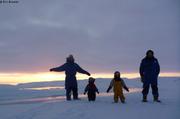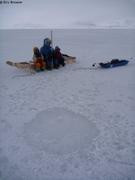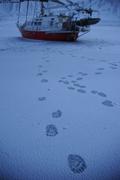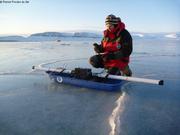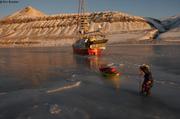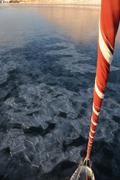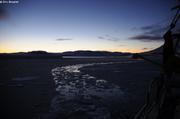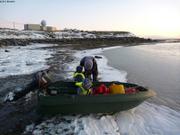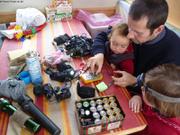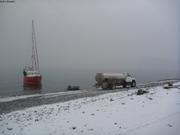Coucher du soleil
We did not see the sun today, there was a clear sky though! We should have seen it yesterday briefly, but it was snowing and the sky was cloudy. We have now to wait until 15th February 2012 before seeing it again...
Solar panels were pretty useful since we arrived at South Cape Fiord (amazingly, Vagabond's stem is pointing North accurately), but now we can store them for four months!
Gradually, Vagabond is getting back to winter organization. Survival suits and other sailing equipments have been put away until next summer. Fresh water tanks are now empty, and iceberg collected ice is melting in barrels inside the boat. Safety camp is ready, in case of fire for instance. Ladder is in place to go down easily on pack ice, already forty centimetres thick. The swing too is installed! Warm clothes are replacing sailing clothes, temperature is down to -22°C today. And two days ago, we emptied out the deep freezer, contents are now in boxes outside. There should be less mild spells here, south of Ellesmere Island, than in Svalbard, and our deep freezer will be off probably until next May. Like if Vagabond settled in a huge deep freezer...
